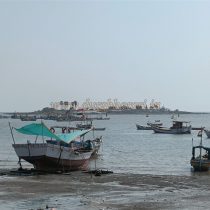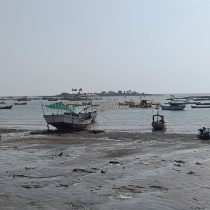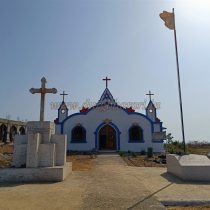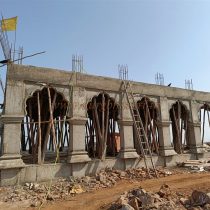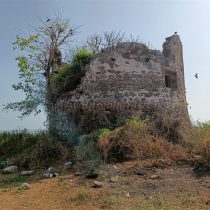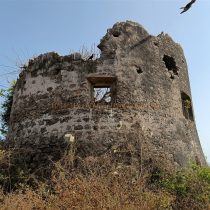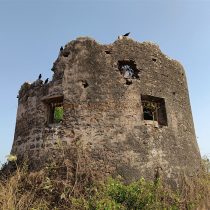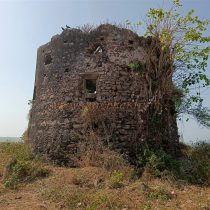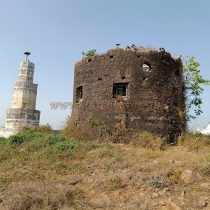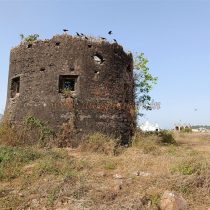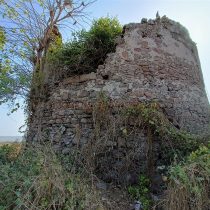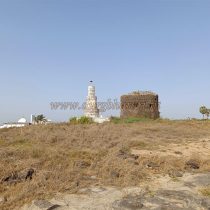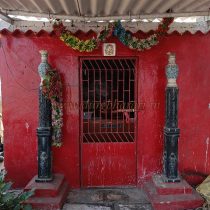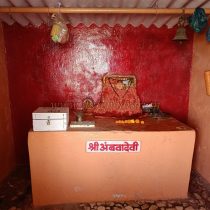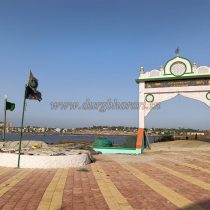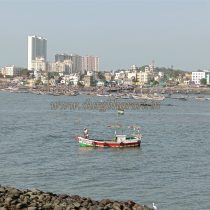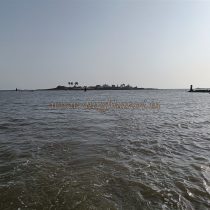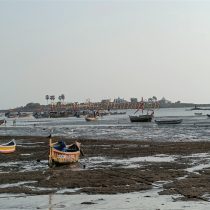AMBOVA
TYPE : SEA FORT
DISTRICT : MUMBAI
HEIGHT : 0
GRADE : EASY
The region of Madh-Marve, located on the western side of Western Railways near Malad West, is well-known among the residents of Mumbai. Madh is a village situated about 12 km west of Malad Railway Station, along the coastline. With coconut and betel nut orchards, bungalows, and a serene atmosphere, it gives visitors a glimpse of Goa. In the vicinity of Madh, there are four forts to explore: Madh Kot, Madh Killa, Erangal Buruj, and Ambava Buruj. Ambava Buruj, situated on Ambava Island towards the west of Madh village and facing the sea, requires a boat to reach due to its challenging terrain. Although reaching Ambava Island can be difficult without the availability of boats, locals are familiar with the area and can assist in navigating the terrain. To reach Ambava, one must first reach the shoreline of Madh village, where there is a jetty.
...
From this jetty a boat ride will take you to Ambava Island, where you will find the Ambava Fort, Ambava Devi Temple, Girijaghar, and Mosque easily visible. The bastion on Ambava stands tall facing the Arabian Sea, providing a strategic view. The current condition of the bastion is deteriorated, and plants have grown over it. The construction of this circular tower, 25 feet in height, is done with rough-hewn stones, earth, and shells. The bastion features windows and a door, constructed using stones, for entry and exit. The door is positioned at an elevated height, and a ladder is used for access. A 15-foot-high bastion with six windows, each measuring 2x3 feet, stands atop and a door is present there. To reach the door, a wooden ladder is employed. The Bastion does not have any arrangement for water but we can see a wee in front of dargah nearby bastion. While the Bastion is no longer habitable, it serves as an excellent vantage point for observing the surrounding area, including the sea. The history of this area dates back to the Portuguese era, during which this region was known as a significant trading post. The Portuguese built this Bastion for the protection of ships anchored at Madh Fort and Madh Port. Although there is limited information available about this Bastion, it is essential to explore the area to gain a complete understanding. In addition to the Bastion, there are no other remains of the fort, making it a short yet fulfilling excursion. The Portuguese influence is still noticeable in the North Konkan region, and this district is recognized for the small forts, towers, and bastions constructed by the Portuguese. The construction of this Bastion, along with the forts and towers in the Madh region, is believed to have been undertaken by the Portuguese for safeguarding their interests in the North Konkan region. In 1739, during the Vasai Campaign, this area came under Maratha control, marking the decline of Portuguese influence. The Bastion, along with other forts in the Madh region, showcases the historical significance of this area. Although limited information is available about this Bastion, exploring its location is necessary to uncover its historical and geographical importance.
© Suresh Nimbalkar

